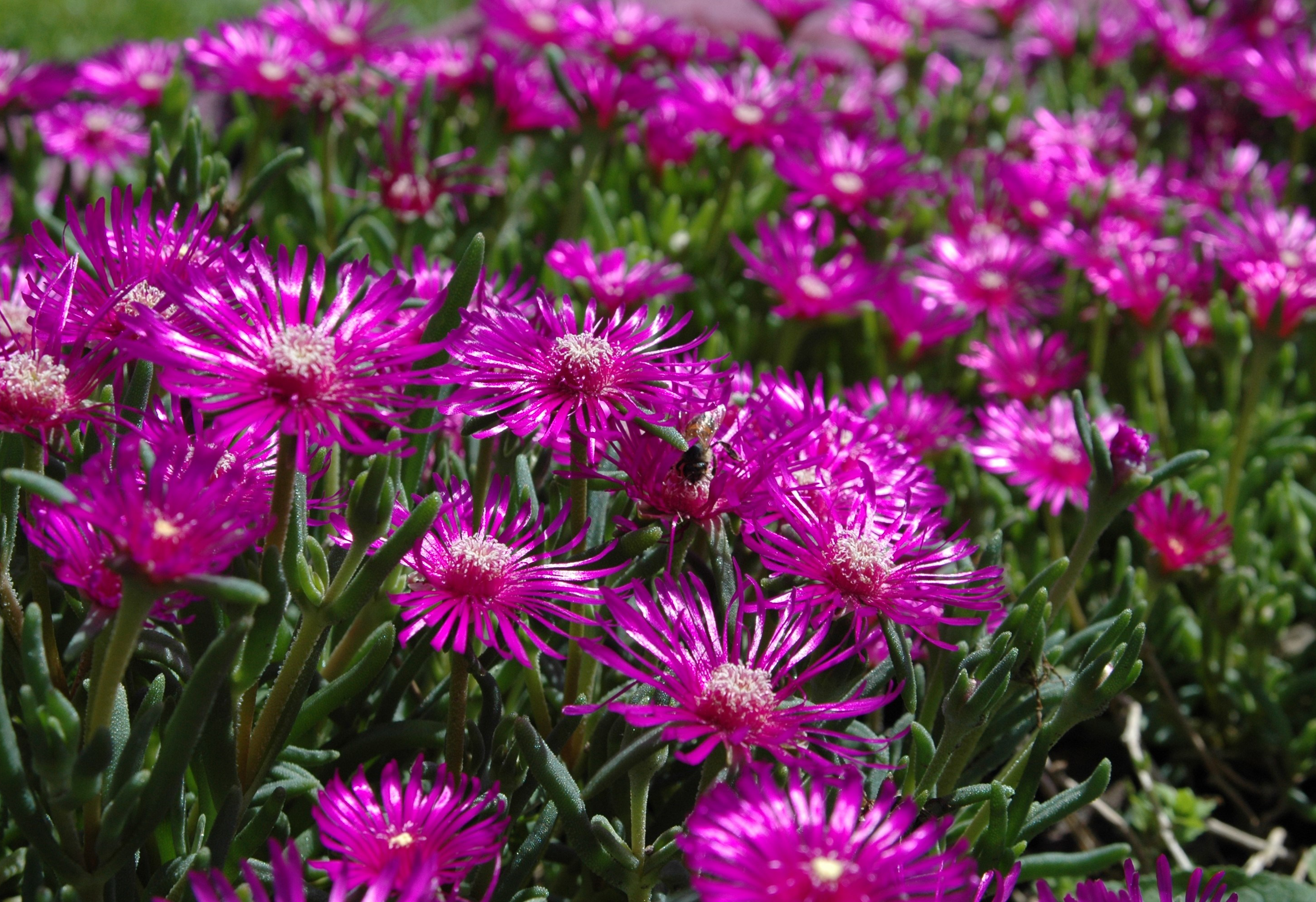News & Press
Wounded, Sealed, Healed
Research team provides new insights into the self-sealing mechanisms of the ice plant

Delosperma cooperi in the Botanical Garden of the University of Freiburg. Photo: Plant Biomechanics Group Freiburg
Plants have developed efficient mechanisms that protect them from external influences: For example, if their tissue shows cracks, cuts or abrasions, plants first quickly seal the resulting wound and then heal it. Dr. Linnea Hesse from the Plant Biomechanics Group at the University of Freiburg, together with Dr. Tim Kampowski and Dr. Jochen Leupold from the University Medical Center Freiburg and Prof. Dr. Thomas Speck and Dr. Olga Speck from the "Living, Adaptive and Energy-autonomous Materials Systems" (livMatS) Cluster of Excellence, compared the self-sealing of wounds between two different species of ice plants (Delosperma). The team could show that during self-sealing, the leaves of Delosperma cooperi contract to a larger extend within the wound region when compared to the leaves of Delosperma ecklonis. The researchers could ascribe this to differences in the mechanical flexibility of the central vascular bundle within the leaves, which is more flexible and under greater tensile stress in Delosperma cooperi than in Delosperma ecklonis. The team has published the results in the International Journal of Molecular Sciences.
The thick, fleshy succulent leaves of ice plants have special tissues for water-storage, which is an adaptation to dry habitats. Unlike Delosperma ecklonis, Delosperma cooperi is native to locations in which it is exposed to seasonal drought stress.
In the past, Olga Speck, Linnea Hesse and their colleagues Tim Kampowski and Thomas Speck could reveal the self-sealing mechanism in Delosperma cooperi: Wounds are sealed by deformations of the entire leaf. The combination of water displacements in the leaf and mechanical instabilities of leaf tissues (different tissues are pre-stressed in tension or compression) drive this movement. During leaf growth, the ground tissue, the parenchyma, is filled with water placing the individual cells under compressive stress. The vascular bundle located in the leaf center, which supplies the leaf with water, is hereby being stretched like a spring. Upon wounding of the leaf, cell sap leaks and evaporates from the wound, the compressive stress in the leaf is released and the central vascular bundle relaxes. As a result, the leaf contracts and the wound edges are pressed together. This leaf deformation is more pronounced in Delosperma cooperi than in Delosperma ecklonis.
The biological self-sealing and self-healing principles of succulents are used within the livMatS Cluster of Excellence as concept generators for the development of novel materials systems. Similar to nature, these bio-inspired systems will be able to quickly seal cracks and then heal. This allows the structural and mechanical properties of the systems to be restored and provides longevity.
Original publication:
L. Hesse, T. Kampowski, J. Leupold, S. Caliaro, T. Speck, O. Speck: Comparative Analyses of the Self-Sealing Mechanisms in Leaves of Delosperma cooperi and Delosperma ecklonis (Aizoaceae). In: International Journal of Molecular Sciences 2020, 21(16), 5768, doi: 10.3390/ijms21165768
